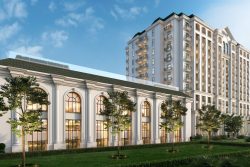In the midst of the daily complaints in the media about this problem and that, it’s a relief to sometimes see the bright spots. In this past week for example, my daughter in Canada sent me a wonderful story about a group of fire-fighters from South Africa who showed up as volunteers to help with the horrendous bush fires that had hit Alberta destroying hundreds of homes. The Canadian firemen were exhausted after almost a month fighting the raging fires every day; the 281 South African firefighters arrived in Edmonton, Alberta, about a week ago to help battle the  massive fires spreading across the province – and their first reaction was to immediately burst proudly into song and dance. One of them told reporters that one of the reasons they came was a consequence of Canadian support for South Africa in its apartheid battle some years ago. “This is payback time,” he said. Regarding the singing at the airport, another fireman said that singing together helped the team bond. You can see the story in full online – just Google “South African firemen in Canada.” It’s an inspiring story particularly for us in the Caribbean to see this expression by a group of people who look and sound like us. A Canadian man who worked in Anzac, one of the towns evacuated by the fire, personally thanked each one of the South Africans, men and women, as they walked through the arrival gates. “Welcome to Canada, thank you so much,” he was quoted saying. Many of the firefighters are from the ‘Working On Fire’ programme implemented in South Africa more than a decade ago to give young people a job, and pull them out of poverty.
massive fires spreading across the province – and their first reaction was to immediately burst proudly into song and dance. One of them told reporters that one of the reasons they came was a consequence of Canadian support for South Africa in its apartheid battle some years ago. “This is payback time,” he said. Regarding the singing at the airport, another fireman said that singing together helped the team bond. You can see the story in full online – just Google “South African firemen in Canada.” It’s an inspiring story particularly for us in the Caribbean to see this expression by a group of people who look and sound like us. A Canadian man who worked in Anzac, one of the towns evacuated by the fire, personally thanked each one of the South Africans, men and women, as they walked through the arrival gates. “Welcome to Canada, thank you so much,” he was quoted saying. Many of the firefighters are from the ‘Working On Fire’ programme implemented in South Africa more than a decade ago to give young people a job, and pull them out of poverty.
Online this week, as well, it was uplifting to see a series of candid photographs of Barack Obama, taken by Pete Sousa, Official White House Photographer in Obama’s time as President. Released not just through White House press office, but on Flickr and Instagram, the photographs document moments of the Obama administration that show the man, and not the ruler, and in a time when he’s being criticized for his performance as President, Sousa’s pictures show us the rarely seen humanity of the man. The photographs are riveting. He’s greeting a 104-year-old Afro-American lady to the White House, and he and Michelle are seen dancing with her. There’s one of him bending over in the Oval Office so that a young visitor who wondered if he and the President had the same hair, could touch it and see for himself, and another of him playing tag with a 10-year-old in his office. Many of the photos are unusual – there is one of him reaching out to a youngster in a crowd where all you see is the child’s face and only Obama’s open palm reaching to him; the rest of the President is not seen; the caption has to tell you it’s him. I cannot recall seeing a collection of photographs that capture so much of a famous person’s spirit; these photos of Obama show you so much of the man. Google “Pete Souza photographing the real Obama” and see the shots for yourself – you will be delighted.
At home, as well, in recent weeks, we have witnessed, without any fanfare in the press, a host of small repair jobs on the roadways, and I know they are welcomed by motorists as one of those small things that mean a lot. One in particular that used to irritate me, was at the head of Sheriff Street where it meets the Seawall Road; at that traffic light, motorists going east would turn from Sheriff Street onto our main road going east to be hit with a road surface that I dubbed “Vietnam” for its jagged almost shell-shocked condition. It was a short stretch, probably less than 100 yards, but your car would tell you it made for a very unpleasant ride. Also, just east of there, on the Seawall Road, approaching Ocean View, there were a couple of what I call swales in the road, fairly deep sinks, that would slow you up in dry weather and fill up with water when it rained. Farther east still, past the UG traffic light, there was a particularly wide sink approaching the Shell gas station that drivers detoured around, and beyond that, at the bridge over the Ogle koker trench, an earlier repair job left some sort of protrusion that would create a jolt for vehicles on both sides of the roadway. Drivers going east or west would regularly make a wide swing to the left to seek the friendlier surfaces in the corner.
Another pet peeve of mine was the stretch of Thomas Road, running east from Camp Street to Vlissengen. Fixed by patchwork repair over the years, that surface was a sequence of small bulges that made for endless vibrations in daily traffic; my friendly local mechanic, Adrian DeSouza, informed me that that piece of Thomas Road was used by Kitty mechanics to road test a car after front-end repairs. He told me, with a big smile, “That road would tell you if you had any front-end problems.” Those conditions I’m describing have been there for eight years – I’ve been driving them and I know – but I’m happy to report a change. It’s as if some perceptive person in our Roads Department drove along there making a mental note of all the little aggravations and passed the list on to the appropriate section. All of those aggravations are gone. Coming west on the Seawall you no longer have to make a swing to the left, and the right turn from Sheriff Street going east is now a pleasant experience, so thanks to our road guardians. And as for Thomas Road, you no longer have to hold on with both hands on that trip from Camp to Vlissengen; it’s smooth sailing all the way.
However, not being ungrateful, but as we’re on road repair, the Ogle Airport Road is crying out for attention. On the stretch in from the Line Top, drivers have to deal with a variety of potholes plus two massive indentations (big enough so you have to skirt them), and there is another bad patch at the turnoff into the airport proper that you have to drive around. It’s bad enough for a standard road, but it’s particularly shocking when it exists on the road to our second international airport. So I’m appealing to the Good Samaritan with the roads-repair list to take a look at this one and recommend action at Ogle; in a way it may be a small thing, but if you drive it often, it means a lot. If you’re alone it’s an annoyance; if you’re picking up or dropping off a visitor it morphs into an embarrassment.




